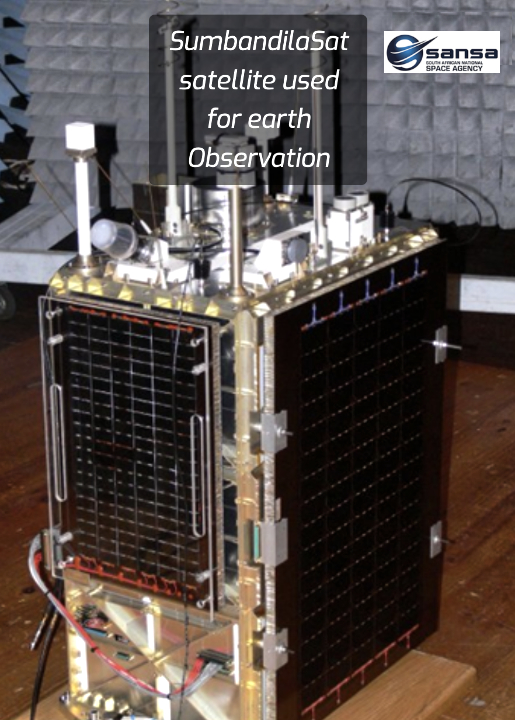
The South African satellite SumbandilaSat (Pathfinder in Venda) is reaching the end of its life and initiated deorbit procedures on Friday, December 10, 2021.
The satellite was launched in 2009 and captured a total of 1,128 high-resolution, usable images. The image data was applied in local research and on the Copernicus (previously GMES: Global Monitoring for Environment and Security) program. The data also contributed toward disaster management, such as flood monitoring in Namibia and fire campaigns in the Kruger National Park. It also recorded timely images of the Fukushima nuclear disaster, as well as the Tuscaloosa tornado in the USA.

In May of 2005, the then DST (Department of Science and Technology) of the South African Government commissioned Stellenbosch University and SunSpace to develop the ZASat pathfinder satellite program (later renamed SumbandilaSat), a technology demonstrator in conjunction with the South African industry.
SumbandilaSat was delivered 15 months later and launched from Baikonur, Kazakhstan, on September 17, 2009, with monitoring and satellite support from the SANSA Space Operations facility in Hartebeesthoekt.
SumbandilaSat was unfortunately launched directly at the start of the 24th solar cycle when the sun became more active and was, therefore, exposed to ever increasing levels of adverse space radiation. On Wednesday, September 14, 2011, data concerning the satellite’s primary function was received for the last time after a successful two years on-orbit. The satellite has since been gradually losing altitude and will most likely burn up in the atmosphere while re-entering the Earth’s atmosphere on December 10.
SumbandilaSat, although crippled because of space weather phenomena, continued to provide valuable engineering data during its more than 12 years in orbit, allowing the South African Space Industry to build on this successful mission.
The SumbandilaSat mission re-established South Africa as a space-faring nation with an on-orbit, smallsat demonstrator and also fostered human capital development. The program allowed for the training of nine new black trainee engineers and broadened the experience of 78 other engineers. On the academic front, the Sumbandila program produced 18 Masters and two PhD students in engineering at Stellenbosch University.
Dr. Val Munsami, CEO of the South African National Space Agency (SANSA), said the Sumbandila mission has demonstrated South Africa’s capability in space engineering and has paved the way for more satellite missions as part of the Space Infrastructure Hub (SIH) currently in development. The SIH will see a suite of different classes of satellites being launched in the coming years drawing on the heritage created through the Sumbandila mission.

The satellite has led to the establishment of the smallsat missions of ZACUBE 1 and 2 by the Cape Peninsula University of Technology (CPUT). The satellite constellation will see the addition of a further seven smallsats that are in development for support to Operation Phakisa (monitoring of the marine environment and economy).
Further, investment in human resources through the SumbandilaSat era has contributed toward SANSA’s program of skills and industry development for future space missions.
